A picture may be worth a thousand words, but an image by itself doesn't always convey the sense of what it was like to “be there.” Tony’s observations on what the camera captured make a great postscript to his very fine description of what life was like in an EC-47 outfit at Pleiku.
Pleiku airbase . . . .
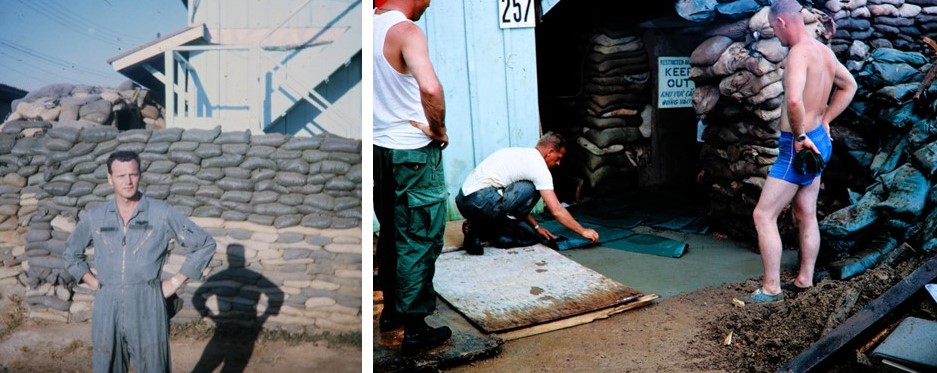
(L) Me standing in front of our Pleiku home. Pretty secure but ugly. (R) The 362ndhad not been at Pleiku very long when I got there so very little protection was in place. We built almost all of the walls and the bunker ourselves. This was part of the process.

 (L) I was pretending that I was on Waikiki beach, taking in the rays. As I recall, no bikini-clad honeys ever came by though. (R) Our patio. The cover you can see a piece of is a parachute that had outlasted its usable life. When stretched tight it would shed rain pretty good. Kept us somewhat dry during the five or six-months-long monsoon.
(L) I was pretending that I was on Waikiki beach, taking in the rays. As I recall, no bikini-clad honeys ever came by though. (R) Our patio. The cover you can see a piece of is a parachute that had outlasted its usable life. When stretched tight it would shed rain pretty good. Kept us somewhat dry during the five or six-months-long monsoon.
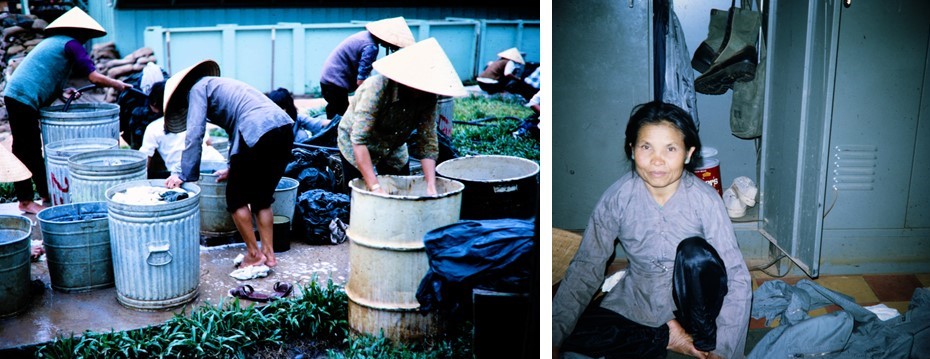
(L) The maids did our laundry by soaking it in water warmed by the sun, used their feet for agitators, then hung it out to dry. During the monsoon season, the air was always extremely wet and cool so nothing would dry. I took an electric blanket to the war, and when the maid got over her fear of it she would put my dainties on the blanket and turn it on high. I had the dryest clothes in the country!
(R) Our maid. Of course she was called “Mamasan.” She treated us good. Someone got her an electric iron, and once she got over her fear of it she ironed everything—socks, underwear, all of it. Her husband also worked on the base for Red Horse (Civil Engineers.) When he finished work he would come to our place and wait for her to get off work. He loved beer, and I had a 5-cubic-foot refrigerator. (I got lucky; happened to be at the BX the day the shipment came in.) I kept that fridge stocked with beer and sodas. I set a money box on it. Beer was a quarter and sodas a dime. I always treated him to one or two. One time the BX got several pallets of Carling Black Label that had sat on the dock so long the cans were all rusty. They finally offered it for a dollar a case to get rid of it. I bought several cases. When the local help arrived or left the base they had to go through a special gate and were not allowed to have anything with them. I would take the crew truck, put a case of beer in there, then drive outside the gate and wait to give Papasan a case of rusty beer. He loved me for it, and I guess he was a local hero for a time.
Hue and Pleiku City . . . .

A pair of aerial views of the Citadel of Hue (pronounced “way”), shot while on a mission. The one on the right is what the pilot would see from the left seat. Hue was the original capitol city of Vietnam. You can see some of the wall that made it a citadel. The Marines fought a vicious battle there earlier in the war.
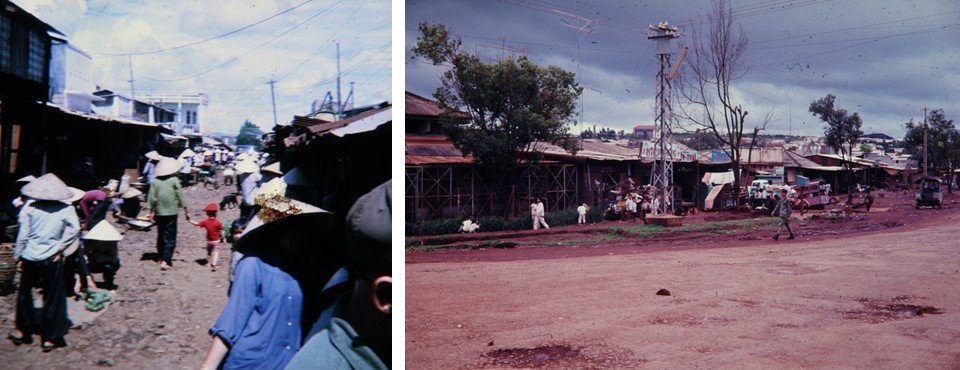
Pleiku City was ”on limits” only one afternoon during the entire year I was there, so about a dozen of us loaded up an old International 6-pack pickup made a visit. These are views of the city in a war-torn country. Note the redness of the soil. I would like to go back and see what changes 50 years and some prosperity have brought to the place.

(L) One last view of Pleiku city.(R) This is a group of captured VC or North Vietnamese waiting for a ride to the POW compound that was waiting for them. They got treated a whole lot better than our guys that fell into their hands. I don’t think they were interested in escaping.
Odds 'n ends . . . .
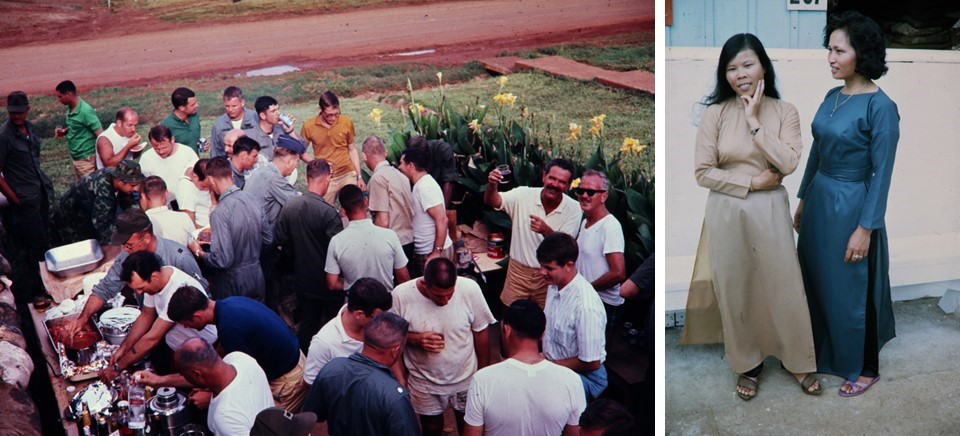
(L) One of the monthly Friday evening parties. Officers and enlisted forgot our differences for a couple of hours and just enjoyed. We enlisted supplied the goodies for this one. (R) Two young ladies dressed up in their Sunday best on the day we had liberty in Pleiku city. I have no idea of who they are or what they were about.
Flying the Mission . . . .
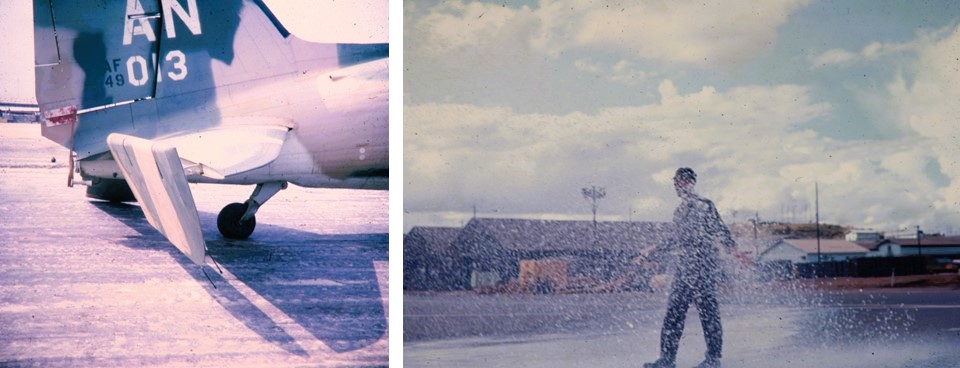
(L) We often landed a Hue/Phu Bai to refuel, and were sitting there one time when a hot rod Huey pilot flew in behind the airplane and did a tilt brake job to stop his forward progress. He got too close and the rotor wash blew the elevators cockeyed. I confronted him and he laughed about it. When the airdrome officer (a Marine Lt. Col.) finished with him he wasn’t laughing any more. I had to stay at Hue for three days until parts got to me to fix it. (R) That's me getting my “fini-flight” goodbye bath after my 179th mission—1,279 hours of low and slow puttering about the friendly skies. (Editor’s note: That’s a lot of flying. Typcially, an EC-47 crewman logged around 145-150 missions in a year’s tour.)
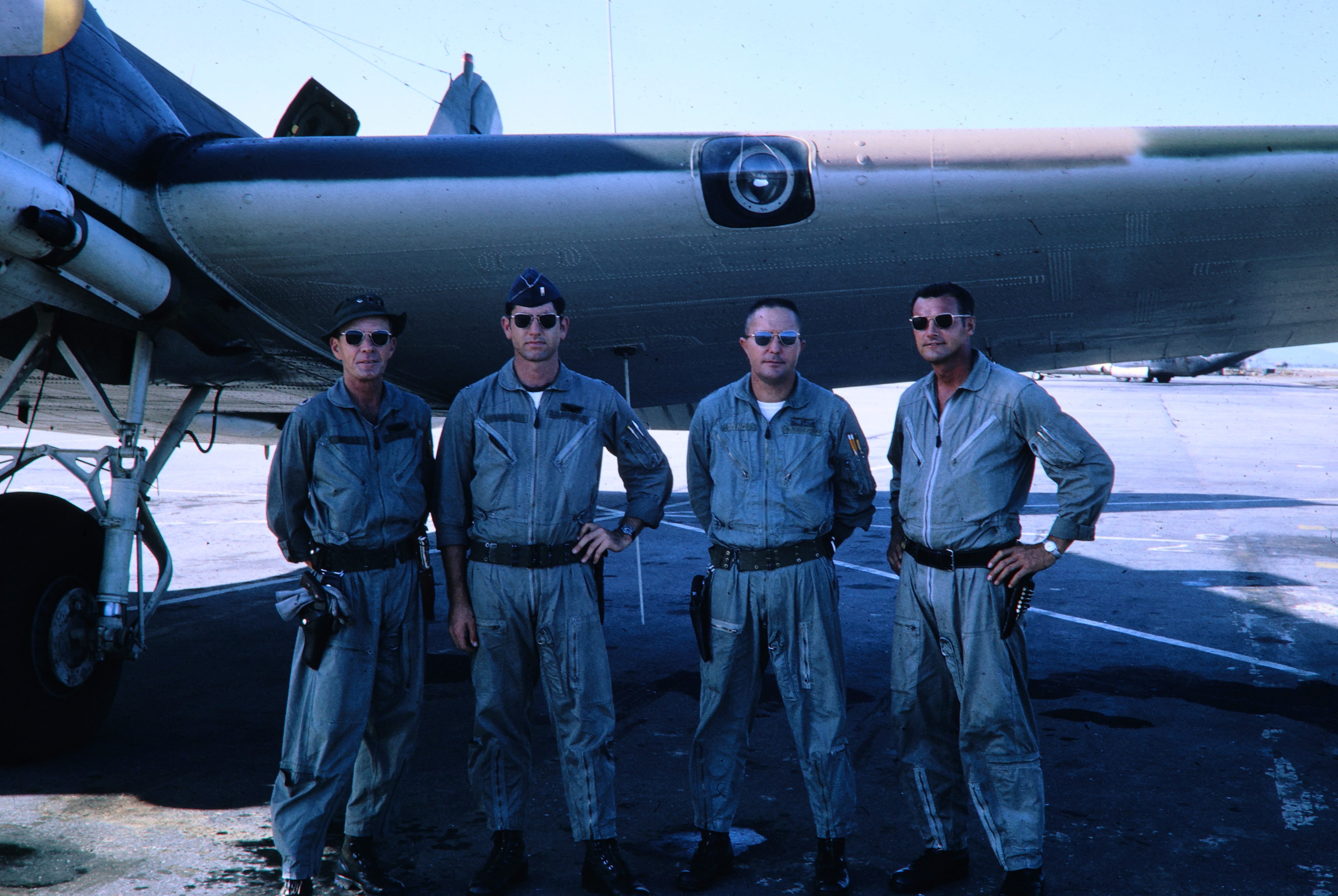
This was my crew for about three or four months. (That's Tony at far right.) Because of people coming and leaving, the crews never stayed together vey long. We were the test flight crew for that stretch of time, so we did stay united for a while. The aircraft commander was a Lt. Col. who had been flying tankers for several years. He was an excellent pilot and a really good guy. He let me make several landings and takeoffs from the right (co-pilot) seat. I wasn’t bad. We also flew the Squadron Commander to Tan Son Nhut for his every-two-week visit with the Wing Headquarters. So I was the guy to go into the city of Saigon to order and pick up the plaques and other stuff that was given out for commendations and other “good guy” awards. I was probably the only guy in a flight suit in the whole city. I never felt threatened.
